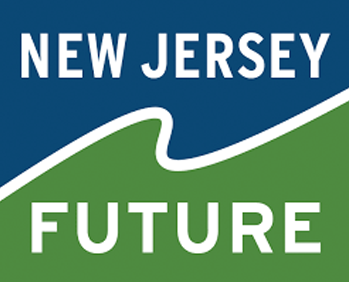
Community Benefits
In addition to the direct benefits green infrastructure can offer to developers and property owners, there are numerous benefits to communities associated with public greening, better air, and green jobs opportunities. The benefits that green infrastructure offers to a community can help build stakeholder support for the development project and increase community interaction with a project.
Beautification of Public Spaces
Generally, a green infrastructure approach is associated with more green space as well as better landscape design. Public spaces will look and feel more “green,” a quality that studies have found can drive positive feelings about a place. This is evidenced by people’s willingness to pay more for properties with increased greenery.

The Schuylkill River Trail in Philadelphia highlights the aesthetic value that bioretention basins and other green infrastructure can add to public spaces. Image Credit: E&LP, 2020
Opportunities for Recreation
Greening public spaces creates more opportunities for outdoor activities like walking, jogging, biking, and bird watching. Trails, courtyards, roof decks, flexible lawns, athletic fields, sports courts, tot lots, and playgrounds are all typical development amenities that can easily integrate with green infrastructure BMPs. Developers should view their amenity spaces as prime opportunities to co-locate green infrastructure systems. This will not only improve the aesthetic and functional value of the space but will also avoid the loss of developable area caused by locating the green infrastructure in isolated spots where it does not serve any other use beyond stormwater management. Incorporating these elements within a design can make a development desirable for future tenants and increase local support for a project.
Green Job Creation
Green infrastructure creates additional job opportunities in design and construction. In Philadelphia, the green infrastructure sector provides approximately 1,160 jobs per year. Green infrastructure development requires specialized skills in design, construction, and maintenance, creating opportunities for jobs in the region. In New York and Philadelphia, specialized training programs have been developed to transition service providers from the landscaping and construction industries into green infrastructure construction and maintenance.

Green infrastructure workers installing geotextile matting to control erosion in a bioretention system. Image Credit: AKRF, Inc.
Public Health and Wellness
- Air Quality – Green infrastructure systems that increase the number of plants, especially trees, in a development will help to keep the air clean by absorbing air pollution. Improved air quality reduces the rate of respiratory illnesses like asthma. In addition to direct pollution removal, green infrastructure can help reduce energy costs as noted earlier, which can help reduce fossil fuel needs and the carbon footprint of a site.
- Heat Mitigation – Plants and trees can decrease temperatures in the immediate vicinity, which in summer can have a measurable effect on heat-related illnesses. Even porous pavement can reduce heat stress in summer by allowing water to evaporate. Heat reduction is especially important in urban areas where mean temperatures can be much greater than surrounding suburbs.
Public Safety
Studies have shown that where there is green infrastructure in public spaces, there is often a reduction in crime. In Philadelphia, a study concluded that areas within one quarter mile of vegetated green infrastructure projects experienced a significant reduction in burglaries and narcotic possessions (Kondo et. al, 2016). Green infrastructure may also help to slow traffic when used in certain configurations in the right-of-way (EPA, 2015).
